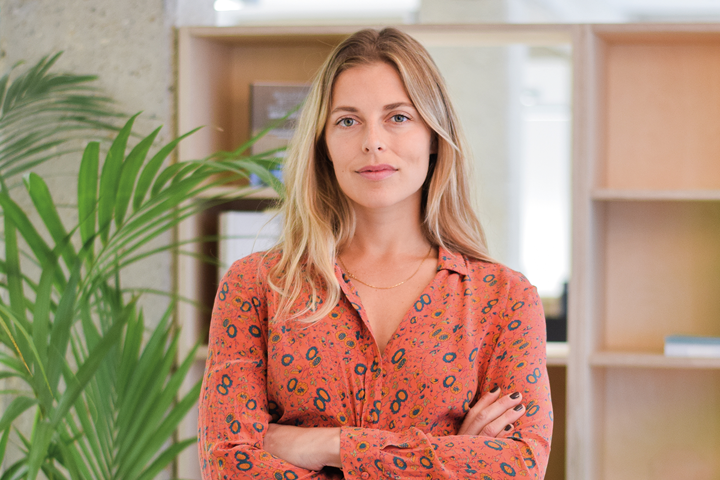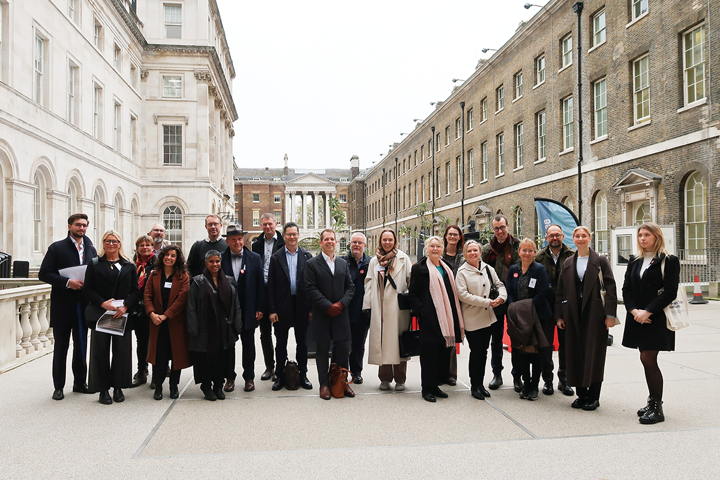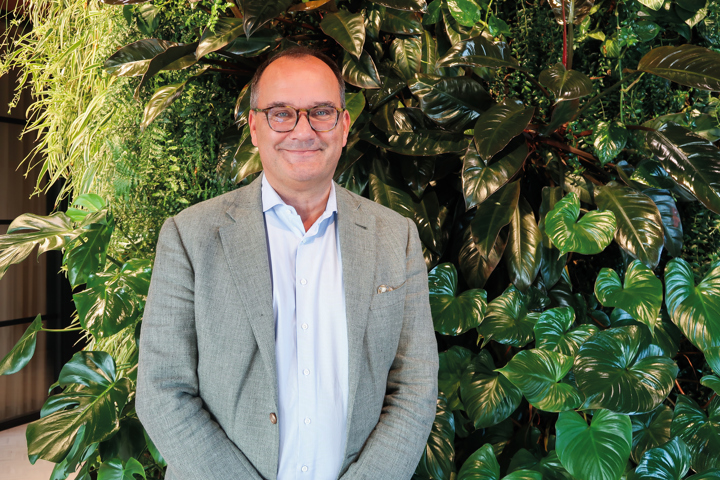
The way towards a net-positive urban transformation
25 January 2024
With climate change no longer being a distant threat but an imminent reality, architectural practices are facing major challenges. Seeking not only to limit the negative environmental effects, but aiming for net-positive impact, is SCC member White Arkitekter. The Link spoke to Anna Lisa McSweeney, architect and UK Head of Sustainability at White Arkitekter, to delve into the core principles of regenerative urban planning to break down the key question: How do we transform our cities into spaces that thrive in harmony with nature and its population?
“At White Arkitekter, we’ve always said that we want to enable a sustainable life through the art of architecture. We are of an explorative nature, and we have good experience of basing our projects in research,” says Anna Lisa.
White Arkitekter is one of Scandinavia’s leading architectural practices, looking to provide sustainable architecture, urban design, landscape architecture, and interior for current and future generations. The employee and ownership structure of White Arkitekter allows for this knowledge and curiosity to feed back on the company’s investments. On average, around six percent of the turnover is allocated to research activities annually, such as the “White Research Lab”, which seeks to ensure that projects remain as sustainable and of as high quality as possible. By applying practice-based cross disciplinary research onto the operations, the purpose is to initiate collaborations with like-minded institutions and, ultimately, support sustainable ways of living. “It allows us to develop themes within our operations. Up until 2023, the themes we have focused on are circular architecture and healthy living environments.”
The Pillars of Regenerative Architecture
Having worked at White Arkitekter for two and half years, Anna Lisa has been involved in strategic as well as project-based work in the company. She is also on the steering group for ‘Architects Declare’ – an international network of architectural practices committed to addressing the climate and biodiversity emergency. The steering group supports signatory practices through knowledge-sharing and engaging stakeholders, policy makers, and the media.
The objectives in the declaration are all characterised by their focus on encouraging the built environment to become more regenerative – an increasingly adopted word in the architecture sphere, but which must be used with caution to not undermine its true meaning, according to Anna Lisa. The term signifies a transformative shift in mindset from a linear way of thinking of architecture, to view it as an integral part of ecological systems and promote mutual benefits between human and nature.
“While sustainable architecture seeks to limit negative effects, regenerative architecture means we can actually have a net positive impact, be more replenishing and resilient,” Anna Lisa explains.
Discussing the characteristics of sustainable and regenerative architecture, Anna Lisa emphasises the importance of adopting a long-term perspective and view humankind as caretakers of the environment.
“I think the key concept you need to bring into all projects is that we are good ancestors. That means that we think long term, and that the decisions we make is going to affect local ecosystems today, tomorrow, and long into the future. We must think about nature and the mutual benefits, for example in how we design and at the same time improve soil health or water flows on a bigger scale.”
More than just the built environment
However, it is not solely about creating eco-friendly buildings. The idea of sustainable and regenerative architecture also feeds into promoting equality and inclusivity within communities, says Anna Lisa. “We must provide places that are safe and more equally distributive in terms of economic and social opportunities. It’s about more than just a building: it’s about all the economic, political, physical, and cultural systems that impact the choices available to a person in the place they live. It’s important to ask ourselves: Does the built environment allow for a person to make sustainable choices?”
The importance of communication
Although the urban landscapes hold a lot of power in terms of enabling sustainable choices on a day-to-day basis, other factors are hindering progress, such as short-sightedness and lack of awareness amongst leaders and the public. “We don’t have the right mindset, and we don’t have the correct narrative. It’s almost like a blind-sightedness. People don’t realise the scale of the issue until it affects them personally.”
To facilitate a shift in mindset amongst the public, Anna Lisa believes that a change of narrative to more relatable concepts is needed. Bringing up the ‘Ultra Low Emission Zone’ in London as an example of resistance from the public, she points out how the way in which messages are communicated from leadership play a significant part in shaping people’s perceptions of the status quo.
“The way these messages are communicated from leadership are so anonymous. If we instead said that we’re going to make a safe air zone and we’re going to make sure that it is a healthy place, people would relate to that narrative so much better. Talking about improving health and lifestyle, as well as mentioning the added benefits to the planet, I think is a better way to go.”
Highlighting health benefits
As human and planet health goes hand in hand, embracing the green transition when designing future-ready landscapes comes with a wealth of positive opportunities on an individual as well as societal level.
“From a social economical point of view, there’s huge possibility for job creation in the circular economy. And by aligning our economy to the wellbeing of nature and people, we could make such rich, beautiful and enjoyable places to be.”
For instance, Anna Lisa explains how sustainable urban planning can promote biophilia – the connection between human beings and nature, deeply engraved into our DNA. Biophilic design, from lower carbon materials in the interior stimulating tactile senses, to a green and biodiverse outside environment, all comes with positive effects such as reduced stress levels and enhanced creativity and overall wellbeing amongst the population.
Community engagement – a crucial part
In order to truly transform our cities, designing for community participation and coevolution is key. As an example of this Anna Lisa mentions a new hospital in Wales, one of White Arkitekter’s ongoing projects, where all major development has to be pinned against a ‘Wellbeing of Future Generations Acts’ framework, ensuring the decisions are beneficial even for future beings. “It would be great if we can take on those kinds of frameworks into local levels and make sure that we make decisions based on the wellbeing of the future.”
Besides empowering young generations and incorporating their perspectives into decision-making processes, Anna Lisa would also like to see nature itself being taken more into consideration when aligning development plans with long-term benefits. “Over time, hopefully, we’ll see that cities are not separate from the land we once occupied. I hope that we can start to see ourselves as part of the systems we’ve already spoken about, and letting nature be more dominant.”



Join our mailing list
and keep up-to-date with the Chamber's news and events.
Read our Privacy Policy here